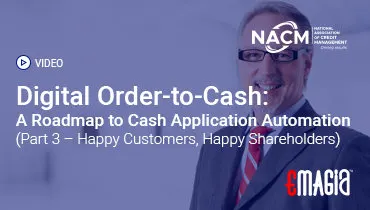In the world of finance and accounting, managing incoming payments can feel like a high-stakes puzzle. Every dollar that comes in needs to be matched perfectly with a specific invoice. This isn’t just a matter of good bookkeeping; it’s the very foundation of a company’s financial health. When you’re dealing with accounts receivable, the way you handle payments directly impacts your cash flow and your ability to grow. This is where the concept of cash application comes into play, and getting the first step right is more important than you might think.
A smooth and efficient cash apps process can be the difference between a business that thrives and one that constantly struggles with liquidity. A flawed process can lead to headaches like unapplied cash, customer disputes, and an inflated Days Sales Outstanding (DSO). By diving deep into the initial phase, you can uncover bottlenecks and set the stage for a more streamlined, profitable operation. This guide will walk you through the very beginning of the journey, revealing how to build a robust system that serves your business now and in the future.
The Foundational Role of Cash Application in Accounting
So, what exactly is cash application in accounting? At its core, it’s the process of matching incoming payments from customers to the corresponding invoices they are meant to pay. This simple but critical task ensures that your accounts receivable ledger is accurate and up to date. Without this step, you can’t tell which customer has paid, what invoices are still outstanding, or how much working capital is truly available. It’s the lynchpin of the entire order-to-cash cycle.
Think of it as the final, crucial step in a long chain of events. You’ve won the sale, delivered the product or service, and sent the invoice. Now, the payment has arrived. It’s time to close the loop by correctly and promptly posting that payment to the customer’s account. This not only keeps your books tidy but also frees up their credit line, allowing for future business. When executed flawlessly, the cash application accounting process provides a clear, real-time picture of your company’s financial standing.
What are Cash Applications? A Detailed Breakdown
The term cash applications is a broad one, encompassing all the activities involved in getting paid and crediting the right accounts. This includes handling payments from a wide variety of sources, whether they are physical checks, electronic transfers like ACH and wire, or credit card payments. The goal is to accurately post every single dollar to the right invoice and customer account, a process that can be surprisingly complex, especially for businesses with high transaction volumes.
This process is about more than just data entry. It involves a mix of detective work, problem-solving, and communication. A skilled cash application manager or specialist must be able to handle payments that don’t match up with invoices perfectly, or payments that arrive without any remittance information at all. The ability to manage these exceptions is what separates an average process from a great one.
The First Step in Cash Application: Aggregating Payments and Remittance
The single most important and often overlooked part of the entire process is the very first one: receiving and aggregating payments and their accompanying remittance data. This isn’t just about a check arriving in the mail. It’s about gathering all the information from every payment channel and bringing it together in one place. This foundational step dictates how smoothly every subsequent action will go.
Payments come from many different places. A large business might receive payments via:
- Checks through a bank lockbox
- Wire transfers or ACH deposits
- Credit card payments via an online portal
- Electronic Data Interchange (EDI) files
- Emails with attached PDFs or Excel sheets
- Direct payments through customer portals
Each of these sources provides a different format for the payment and its remittance. The remittance advice is the crucial piece of the puzzle—it’s the information that tells you what the payment is for. For a check, it might be a small slip of paper. For an electronic payment, it could be a simple memo field, or a separate email with a detailed breakdown. The challenge lies in bringing all this disparate data together and making sense of it. A successful cash application solutions strategy starts here, with a clear plan for capturing all this information.
From Remittance to Reconciliation: The Next Phase
Once you have the payments and the remittance data, the next major challenge is matching the two. This is where many companies hit a wall. Manual matching is labor-intensive and error-prone, especially when dealing with high volumes. This is precisely why many organizations are looking to automate cash management and the broader automation of cash application process. The goal is to get from the raw data to a fully reconciled, posted payment as quickly and accurately as possible.
In a manual world, a specialist would open each check, scan each remittance advice, and try to find the corresponding invoice numbers in their ERP or accounting system. This tedious work can take up to 25% of an accounts receivable team’s time, leaving little room for more strategic work like collections or analysis. This is a primary reason why automatic cash application and automated cash app solutions have become so popular. They transform this manual slog into a streamlined, hands-off process.
The Power of Automated Cash Application
Implementing an automated cash application system completely changes the game. Instead of relying on manual data entry and human guesswork, these systems use advanced technologies to handle the heavy lifting. The core function of these tools is to automatically pull in payment data from all sources, extract the remittance information, and then use powerful matching logic to connect payments with open invoices. This kind of technology is the future of finance.
What is Automated Cash Application Technology?
At the heart of an automated cash application technology solution are several key components. The first is intelligent data capture. Using technologies like Optical Character Recognition (OCR), the system can “read” remittance data from PDFs, images of checks, and other documents. The system then normalizes all this information, no matter the source, so it can be used for matching. This process is far faster and more accurate than a human could ever be.
Next, the system’s matching engine gets to work. It uses rules-based logic and, in more advanced systems, machine learning and AI to match payments to invoices. It can handle complex scenarios like a single payment for multiple invoices, short payments, and payments with missing or incorrect invoice numbers. This level of sophistication allows for a high “straight-through processing” rate, meaning a large percentage of payments are posted with zero human intervention.
Choosing the Right Automated Cash Application Solutions
When searching for the right automated cash application solutions, you should look for several key features. A good solution should offer seamless integration with your existing ERP or accounting system. It should also be able to handle payments from a wide range of channels, including lockboxes, ACH, and customer portals. Additionally, a system that can handle different currencies and languages is a huge plus for global businesses.
The best solutions offer more than just matching; they provide deep analytics and reporting. This gives you real-time visibility into your cash position and helps you identify trends. For instance, you can see which customers are consistently paying late or which payment methods are causing the most unapplied cash. This insight is invaluable for strategic decision-making and for improving the overall efficiency of your accounts receivable department. This is a huge benefit of ar cash application automation.
The Benefits of Automating Your Cash Apps Process
The advantages of an automated cash application software system are numerous and far-reaching. By eliminating manual tasks, you free up your team to focus on high-value activities like resolving disputes and managing collections. This leads to a more productive and engaged workforce. Furthermore, automation drastically reduces human error, ensuring your financial records are always accurate and ready for an audit. The increased speed of processing payments also means your DSO drops, improving cash flow and providing the working capital you need to grow.
In short, moving to auto cash application is a strategic move that affects the entire business. It’s a way to unlock cash that is otherwise trapped in a slow, manual process. Whether you’re considering a simple auto cash app or a more comprehensive system, the benefits are clear: improved efficiency, greater accuracy, and a healthier financial future.
A Look at the AR Cash Application Role
In a manual environment, the ar cash application role is focused on repetitive data entry. But with automation, the role shifts to a more strategic, analytical one. The specialist becomes an exception handler, using their expertise to resolve the most complex cases that the system can’t handle. They can spend their time communicating with customers, improving processes, and analyzing data to find new ways to improve the business. This is a much more rewarding and valuable position.
Understanding and Overcoming Cash Application Challenges
Even with advanced technology, challenges can arise. The most common one is dealing with incomplete or missing remittance information. A customer might send a payment without any details, leading to what’s known as “unapplied cash.” This requires a lot of detective work to figure out which invoice the payment is for. Another challenge is dealing with partial payments, short payments, or deductions. These exceptions require a deeper level of analysis and understanding.
Modern solutions, however, are built to tackle these very issues. They use AI and machine learning to learn from past exceptions, improving their ability to match payments over time. For example, if a customer consistently pays without including a specific invoice number but always references a PO number, the system can learn to make that connection automatically. This intelligent exception handling is what makes today’s automated cash application tools so powerful. They’re not just about speed; they’re about intelligence.
How to Handle Unapplied Cash
Unapplied cash is a major pain point for many businesses. It sits on the balance sheet, unable to be matched to an invoice, and it can cause headaches for both the finance team and the customer. The best way to deal with it is to have a clear process in place. The First Step in Cash Application for unapplied cash is to try to match it with existing records. If that fails, it’s time to reach out to the customer and request the remittance details. This is an area where automated cash app system solutions can be a huge help, as they can flag these exceptions and even automate the communication with the customer.
The Importance of a Well-Defined Cash Application Process
Regardless of whether you are using a manual or automated system, having a well-defined process is crucial. Every team member should know exactly what to do at each stage. This includes a clear protocol for what to do when remittance information is missing, when a payment is a partial one, or when a payment needs to be split across multiple invoices. A structured approach minimizes errors and ensures consistency, which is vital for accurate financial reporting. This is why many companies invest in cash application management and look for expertise in the field.
The Role of Cash Application in Business Success
Ultimately, a strong cash application process is about more than just numbers. It’s about optimizing your entire financial operation. It improves customer satisfaction by ensuring their accounts are always up to date, which reduces disputes and makes future transactions smoother. It also gives your leadership team the real-time data they need to make informed decisions about everything from investment to expansion. This process, when done correctly, is a true competitive advantage.
Why an Automatic Cash Application System is a Strategic Asset
An automatic cash application system is not just a tool for the finance department; it’s a strategic asset for the entire company. It provides the visibility and efficiency needed to scale without adding more headcount to your accounts receivable team. This means you can handle a higher volume of transactions as your business grows without being bogged down by manual work. This is the essence of why companies are investing in automated cash application solutions and other forms of finance automation.
Mastering the “About Cash Application” Conversation
The term about cash application is often used in a general sense, but it’s important to be specific. Are we talking about the manual process, the challenges, or the benefits of automation? By understanding the nuances of each, you can have a more productive conversation with your team and your technology providers. The goal is to move beyond the simple concept and into a more strategic discussion about how it can be used to improve the business.
For example, instead of just asking, “what is a cash application?” you can ask, “how can we use automated cash application tools to reduce our DSO and improve our collections?” This shifts the focus from a simple definition to a business-driven conversation. This is the mark of a forward-thinking finance team that is ready to embrace the power of technology.
A Modern Approach: How Emagia Helps
When it comes to revolutionizing the cash application process, modern enterprises are turning to intelligent automation. A leader in this field is Emagia, which provides powerful, AI-driven solutions to tackle the most complex challenges of accounts receivable. Their platform is built on a foundation of artificial intelligence and machine learning, designed to eliminate the manual, repetitive tasks that have historically plagued finance teams. Emagia’s **automated cash application** platform goes beyond simple matching. It uses advanced algorithms to capture remittance data from a multitude of sources—bank files, emails, PDF documents, and even paper checks via OCR—and then intelligently matches that data to the correct invoices with industry-leading accuracy. This high straight-through processing rate frees up your team to focus on strategic activities. The emagia automated cash application solution is not just about speed; it’s about providing real-time visibility and a single, unified view of your cash flow, enabling better forecasting and decision-making. By leveraging their expertise, businesses can achieve a significant reduction in unapplied cash and DSO, transforming their financial operations from a cost center into a strategic asset.
Frequently Asked Questions
What is cash application?
Cash application is the process in which an organization matches and posts incoming payments to the corresponding invoices in their accounts receivable ledger. It is a critical part of the order-to-cash cycle that ensures accurate financial records and provides a clear view of a company’s working capital.
What is the difference between cash application and collections?
Cash application is the process of posting payments after they are received. Collections, on the other hand, refers to the activities a company undertakes to ensure payment is received on time, such as sending reminders or making phone calls for overdue invoices. While they are related, they are distinct processes that rely on each other to be successful.
What is the most common form of cash application?
The most traditional form is manual cash application, where a finance team member manually matches and posts payments. However, with the rise of technology, automated cash application is becoming the most common and preferred method due to its speed, accuracy, and efficiency.
How can I improve my cash application process?
The best way to improve your process is to first identify bottlenecks, such as a high volume of unapplied cash or a long time spent on manual matching. Implementing an automated cash application software system can help resolve these issues, drastically reducing manual work and improving accuracy.
Why is cash application important for a business?
Cash application is vital because it directly impacts a business’s cash flow. An efficient process reduces Days Sales Outstanding (DSO), ensures accurate financial reporting, and provides real-time visibility into the company’s financial health, which is essential for strategic decision-making.



